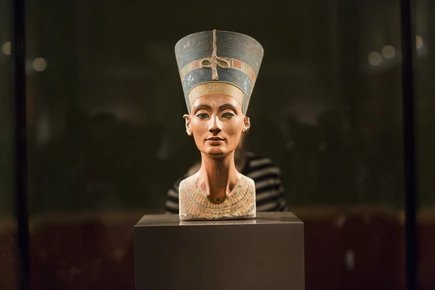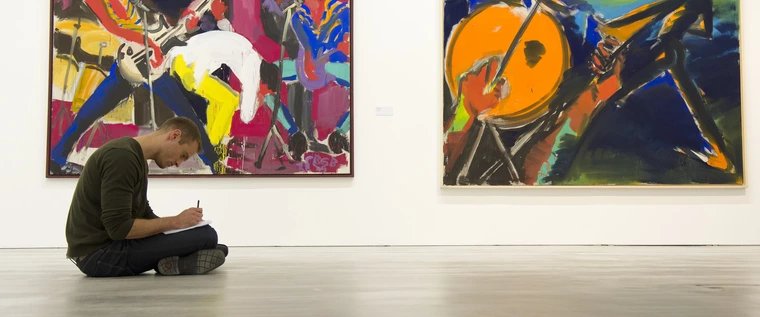
The watercolours by the indigenous artist Feliciano Lana from Brazil, who died in 2020, deal with the history of contact between indigenous people and whites on the Upper Rio Negro. Lana tells a local version of global history in his depictions and provides new, sometimes very personal perspectives on the advance of colonialism and capitalism.
The drawings show, among other things, the origin of the whites, their expulsion for inappropriate behaviour during a ritual and their return as soldiers, explorers, colonial and state administrators.the exhibition focuses on the works and the artist's perspective (including a video interview). Together with these, some works by younger contemporary Indigenous artists from Brazil will be shown, as well as a video installation with Indigenous contemporary witnesses who refer to the stories told by Lana.
Feliciano Lana, whose indigenous name was Sibé, was born in 1937 in São João Batista, a small community on the Tiquié River in north-east Brazil, where Lana's father was Desana and his mother belonged to the Tukano language group. At the age of four, in 1941, he was taken to a Salesian boarding school to be educated away from his community in the spirit of the whites. Here, Lana learnt to read and write Portuguese and was taught maths, physics and geometric drawing. his time at the boarding school also marked the beginning of Lana's relationship with the non-indigenous world, which was to shape much of the rest of his life. after leaving school, Lana lived in Colombia for several years. After returning to his homeland, he worked as a plantation labourer, bricklayer's assistant, tractor driver, telegraph operator, bricklayer and miner.Feliciano Lana is considered by the Western world to be one of the first indigenous artists from the Amazon region.His work began in the early 1970s when he was invited by Lithuanian-born Father Casimiro Bécksta to record the indigenous culture of the region. Lana was originally supposed to take photographs and make audio recordings, but then decided to capture his knowledge in painted pictures. Little by little, he became an expert in visualising the traditions and mythical universe of the region.
In May 2020, Feliciano Lana Sibé died at his home in the municipality of São Francisco as a result of a COVID-19 infection.
A temporary exhibition by the Stiftung Humboldt Forum im Berliner Schloss in collaboration with the Ethnologische Museum der Staatlichen Museen zu Berlin – Preußischer Kulturbesitz.
- Free of charge
- Ages 12 and up
- Languages: German/English
- Room 302, 3rd floor



